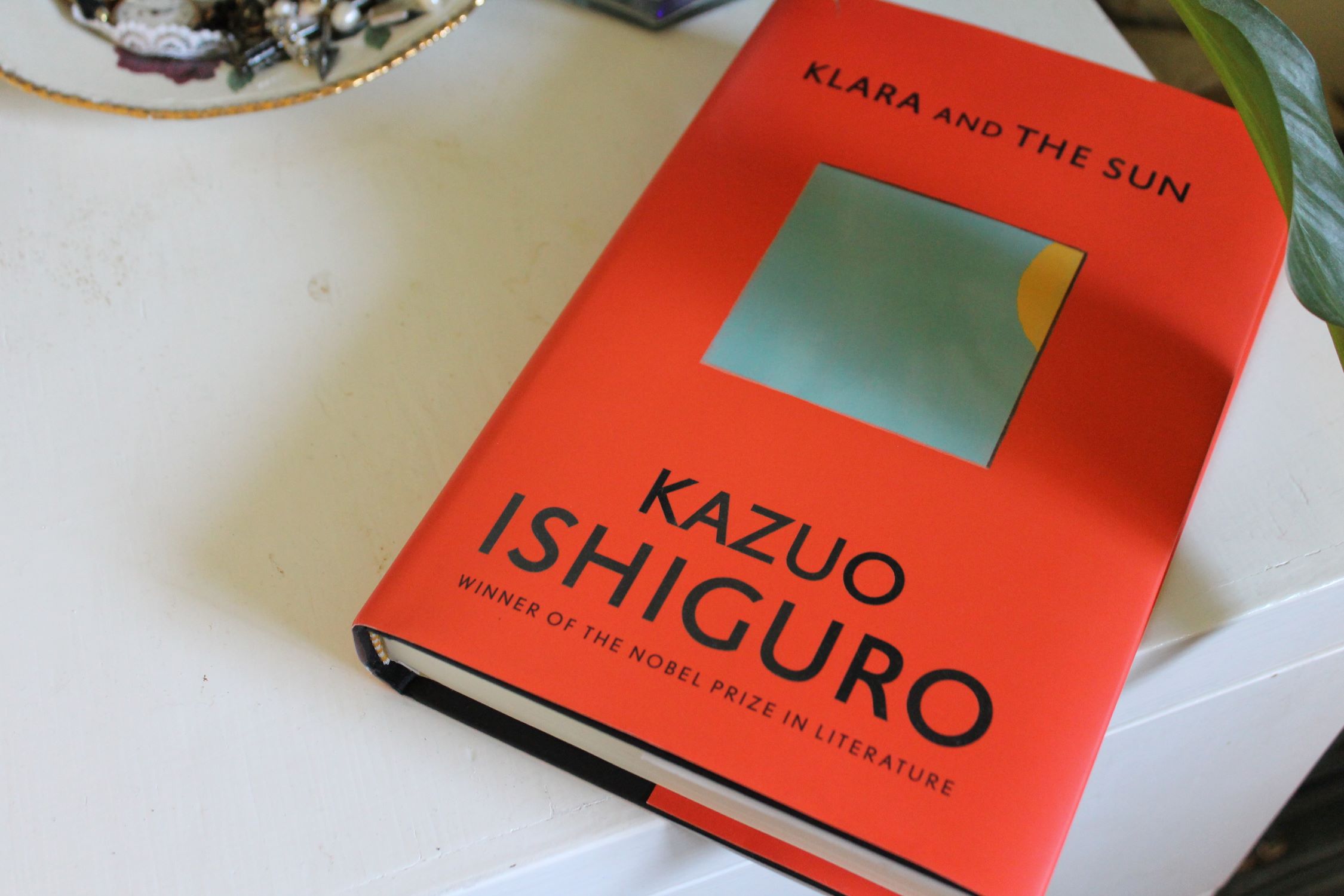
Klara and the Sun, the latest novel by the renowned author Kazuo Ishiguro, has captured the hearts and minds of readers around the world. With its intriguing storyline and compelling characters, this literary masterpiece delves into themes of love, artificial intelligence, and the human condition. Set in a dystopian future where technological advancements have blurred the lines between humans and machines, the novel follows the journey of Klara, an artificial friend, as she seeks to understand the mysteries of life and the sun. As we delve deeper into the pages of Klara and the Sun, we unearth 11 enigmatic facts that make this novel a must-read for fans of Ishiguro’s work and lovers of thought-provoking literature. Get ready to embark on a captivating journey as we explore the mesmerizing world of Klara and the Sun.
Key Takeaways:
- Klara and the Sun” by Kazuo Ishiguro is a captivating novel that explores the relationship between humans and technology, delving into themes of love, sacrifice, and the impact of advancing technology on society.
- The novel’s endearing protagonist, Klara, offers poignant insights into human nature, while Ishiguro’s lyrical writing style and thought-provoking exploration of loneliness and consciousness leave readers with lingering questions.
Klara and the Sun is a thought-provoking novel.
Kazuo Ishiguro’s “Klara and the Sun” is a mesmerizing and thought-provoking novel that delves into themes of artificial intelligence, humanity, and love. Set in a dystopian future, this enigmatic story follows the journey of Klara, an Artificial Friend, as she navigates the complexities of human existence.
The novel explores the relationship between humans and technology.
One of the captivating aspects of “Klara and the Sun” is its exploration of the intricate relationship between humans and technology. Ishiguro raises thought-provoking questions about the implications of AI on society and the ethical dilemmas that arise when we blur the lines between human and machine.
Klara is a remarkable and endearing protagonist.
Klara, the AI protagonist of the novel, captures readers’ hearts with her innocence, empathy, and longing to understand the world around her. Ishiguro skillfully portrays Klara’s growth and development as she learns from her interactions with humans.
The novel raises philosophical questions about consciousness and existence.
In “Klara and the Sun,” Ishiguro dives deep into philosophical inquiries about consciousness and what it means to be alive. Through Klara’s perspective, readers are pushed to contemplate the nature of existence and the boundaries between artificial and human consciousness.
The novel is set in a futuristic, technologically advanced world.
Ishiguro paints a vivid picture of a future society filled with advanced technologies and AI-driven beings. The author’s impeccable storytelling allows readers to immerse themselves in this captivating and meticulously crafted world.
Ishiguro’s writing style is lyrical and evocative.
Kazuo Ishiguro’s prose in “Klara and the Sun” is characterized by its lyrical beauty and atmospheric descriptions. His masterful storytelling and attention to detail create a captivating reading experience that draws readers into the narrative.
The novel explores themes of love, sacrifice, and hope.
Love, sacrifice, and hope are central themes in “Klara and the Sun.” The novel delves into the complexities of human emotions and the lengths people are willing to go to protect and care for those they cherish.
The book prompts reflection on the impact of technology on society.
“Klara and the Sun” serves as a cautionary tale, urging readers to reflect on the potential consequences and responsibilities that come with advancing technology. Ishiguro highlights the importance of considering the ethical implications of AI in our rapidly changing world.
Klara’s observations offer poignant insights into human nature.
As Klara navigates the human world, she offers keen observations that provide poignant insights into human nature. Ishiguro skillfully captures the nuances of human behavior through Klara’s innocent but perceptive lens.
The novel is a thought-provoking exploration of loneliness and isolation.
“Klara and the Sun” delves into the themes of loneliness and isolation, exploring how these emotions impact both humans and AI. Through Klara’s experiences, Ishiguro invites readers to reflect on the nature of loneliness and our yearning for connection.
The ending of the book leaves readers with lingering questions.
Without giving away spoilers, the ending of “Klara and the Sun” is enigmatic and leaves readers contemplating its deeper meaning. Ishiguro’s ability to provoke thought and leave room for interpretation adds to the allure and intrigue of the novel.
Conclusion
In conclusion, “Klara and the Sun” by Kazuo Ishiguro is a thought-provoking and enigmatic novel that explores the complexities of human emotions, artificial intelligence, and the blurred boundaries between the two. The story captivates readers with its unique narrative perspective, diving deep into the mind of Klara, an artificial friend designed to fulfill the emotional needs of her owner.
Ishiguro’s masterful storytelling and rich character development make this novel a must-read for anyone interested in exploring the existential questions of love, mortality, and the nature of consciousness. Through Klara’s journey, readers are invited to reflect on the meaning of humanity and the potential consequences of technological advancements.
With its poetic prose and thought-provoking themes, “Klara and the Sun” is a testament to Ishiguro’s mastery as a writer, and a compelling exploration of the intricacies of the human heart and the mysteries of the universe.
FAQs
1. What is the main theme of “Klara and the Sun”?
The main themes of “Klara and the Sun” revolve around artificial intelligence, human emotions, and the blurred boundaries between the two. The novel explores the existential questions of love, mortality, and the nature of consciousness.
2. Who is Klara in the novel?
Klara is the protagonist of “Klara and the Sun.” She is an artificial friend, created to fulfill the emotional needs of her owner. The novel is narrated from Klara’s perspective, offering a unique insight into her thoughts and experiences.
3. What is the significance of the Sun in the story?
The Sun holds significant symbolic meaning in the novel. It represents life-giving energy, hope, and the mysteries of the universe. It serves as a central motif that underscores the themes of mortality, existence, and the search for meaning.
4. What makes “Klara and the Sun” unique among other AI-themed novels?
“Klara and the Sun” stands out among other AI-themed novels due to Kazuo Ishiguro’s unparalleled storytelling and his ability to delve deep into the emotional complexities of artificial intelligence. The novel raises profound philosophical questions and offers a nuanced exploration of human consciousness and the potential consequences of technological advancements.
5. Is “Klara and the Sun” a standalone novel or part of a series?
“Klara and the Sun” is a standalone novel. It can be enjoyed independently without having to read any other books by Kazuo Ishiguro.
If you're captivated by the enigmatic world of Klara and the Sun, why not explore other fascinating topics? Delve into the ethical dilemmas surrounding genetic modification, or discover the captivating realm of artificial intelligence in the movie A.I. For a classic take on science fiction, Isaac Asimov's I, Robot is a must-read, offering surprising insights into the relationship between humans and machines.
Was this page helpful?
Our commitment to delivering trustworthy and engaging content is at the heart of what we do. Each fact on our site is contributed by real users like you, bringing a wealth of diverse insights and information. To ensure the highest standards of accuracy and reliability, our dedicated editors meticulously review each submission. This process guarantees that the facts we share are not only fascinating but also credible. Trust in our commitment to quality and authenticity as you explore and learn with us.


